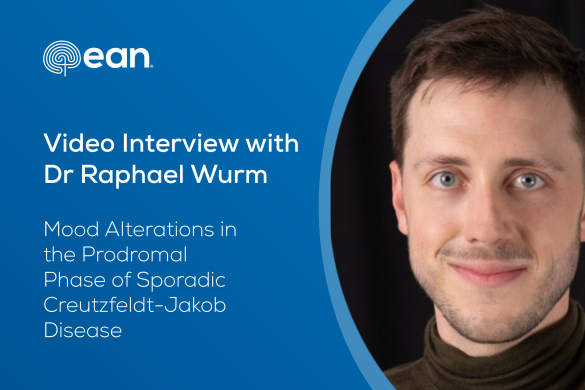By Elena Moro
For May 2016 we have selected: Meinzer M, Darkow R, Lindenberg R, Flöel A. Electrical stimulation of the motor cortex enhances treatment outcome in post-stroke aphasia. Brain 2016:139;1152-1163.
Language deficits after a stroke can be devastating and have a remarkable impact on the quality of life. Rehabilitation strategies can improve aphasia also in the chronic phases, but there is the overall need of more efficacious and focused treatment strategies. Transcranial direct current stimulation (tDCS) has been shown to change cortical excitability and induce synaptic plasticity without side effects. In healthy subjects, it has been demonstrated that five to 10 sessions of excitatory (anodal) tDCS of the left primary motor cortex (M1) can improve language processing, motor and cognitive learning for up to 12 months. Moreover, there is evidence that anodal tDCS can enhance immediate outcome in aphasia. However, studies about long-term stimulation effects and with sham stimulation are lacking so far.
To investigate the role of tDCS in enhancing language therapy outcome in post-stroke aphasia, the authors conducted a randomized, sham-tDCS controlled clinical trial assessing both short- and long-term outcome of intensive language training in combination with anodal M1-tDCS. 26 native German speaking patients with chronic aphasia and impaired naming ability were randomised to receive highly intensive naming therapy over two weeks (two sessions of 1.5h per day for a total of eight days) together with 20 minutes of left M1-tDCS or sham-tDCS twice daily at the beginning of each treatment session. Naming ability was assessed during two baseline evaluations using a standardised battery of pictures. 60 pictures that could not be named correctly were selected for each patient and trained during therapy (trained items). The remaining 284 pictures remained untrained (untrained items), and were used to assess transfer effects. Primary outcome of the study was treatment success for trained items, whereas secondary outcomes were transfer to untrained items, and generalisation to everyday communication ability (assessed by the German version of two questionnaires, CETI and PCQ). These outcomes were evaluated immediately before and after the end of the intervention and after 6 months.
Both active and sham M1-tDCS group of patients showed significant improvement of naming ability for trained items at the end of the 2-week training period and at 6 months (P<0.0001). There was a trend towards a larger effect (P=0.08) at 2 weeks in the active tDCS group, which also maintained a significantly better improvement at 6 months (P=0.01). Transfer to untrained items was significantly larger in the active t-DCS patients (P=0.0009) at 2-week and maintained at the 6-month assessment only in the active stimulation group. Everyday communication was significantly better in the anodal t-DCS group.
“These are interesting novel results, supporting the effectiveness of anodal M1-tDCS in enhancing learning treatment in post-stroke aphasia, especially in the long-term,” says Prof. Christian Enzinger, Division of Neurology, Medical University of Graz, Austria. “M1 stimulation could facilitate processing in intact language regions and thus prime better working conditions for regions involved during therapy. As such, there is the potential for tDCS to evolve and also to help the recovery from aphasia in other neurological conditions. Importantly, the authors have proposed the use of a technique that can be more easily executed in standard clinical settings. Nevertheless, these findings need to be reproduced in larger studies with longer follow-up.”
The other nominees for the May paper of the month are:
– Herrlinger U, Shafer L, Steinbach JP, et al. Bevacizumab plus irinotecan versus temozolomide in newly diagnosed O6-methylguanine–DNA methyltransferasenonmethylated glioblastoma: The randomized GLARIUS trial. J Clin Oncol March 14, 2016; 10.1200/JCO.2015.63.4691. In this phase II unblinded trial 182 patients with newly diagnosed glioblastoma were randomized to receive during radiotherapy bevacizumab plus irinotecan (BEV+IRI) or temozolomide. The progression-free survival rate after 6 months significantly increased in the BEV+IRI group, although overall survival and quality of life measures did not differ between groups.
– Clarke CE, Patel S, Ives N, et al., for the PD REHAB Collaborative group. Physiotherapy and occupational therapy vs. no therapy in mild to moderate Parkinson disease: A randomized clinical trial. JAMA Neurol 2016;73:291-299. In this multicenter trial the effects of individualized physiotherapy and occupational therapy versus no therapy were assessed in 762 parkinsonian patients over a 15-month time period. No significant differences in the activities of daily living and quality of life measures were observed, although there was a trend towards a better effect in the active group.






